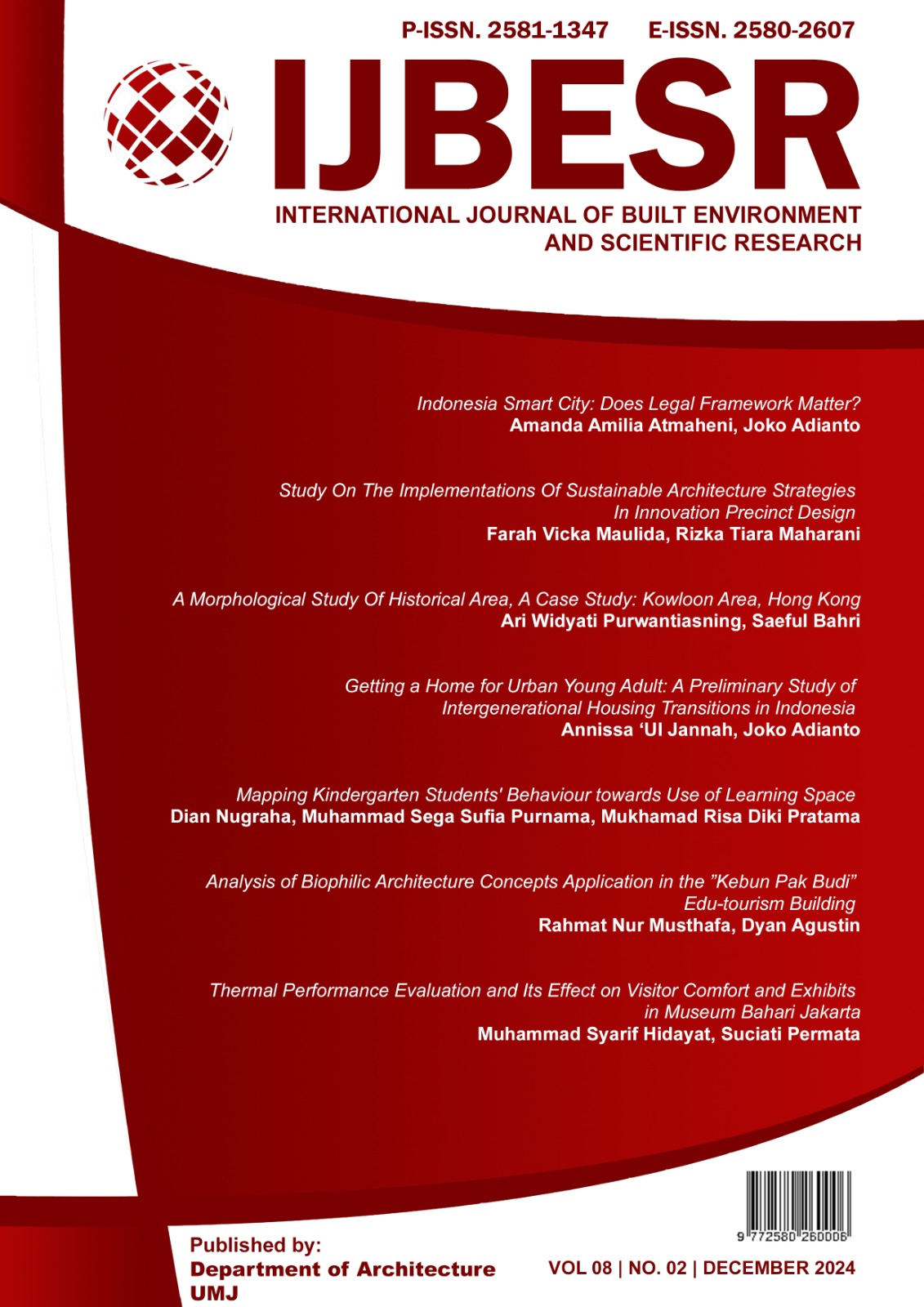A MORPHOLOGICAL STUDY OF HISTORICAL AREA, A CASE STUDY: KOWLOON AREA, HONG KONG
DOI:
https://doi.org/10.24853/ijbesr.8.2.115-122Keywords:
Kowloon Area, Historical Area, Morphology, Land Use, Street Patterns, Building PatternsAbstract
This study examines the morphological changes of Kowloon Area of Hong Kong by using a morphological component approach of land use, street patterns, and building patterns. The method of this study used the historical method, which includes four stages: heuristics, criticism, interpretation, and historiography. The results showed that the morphological growth of Kowloon Area showed significant growth and changes. The land use of Kowloon Area as a historical area has shown changes with an increase in the residential, trade, and service sectors, and industry, which is balanced to increasing the green area, on the other hand, a reduction in the agricultural and plantation sectors. The street pattern network of Kowloon Area of Hong Kong shows there are many pedestrian lane and areas for pedestrian and currently has a mixed pattern. The building’s types in Kowloon Area of Hong Kong have been regarded as a modern one which are contextual with the historical buildings from colonial era within the area.References
Budi, D. P. (2018). Perlindungan Hukum Terhadap Kebudayaan Melalui World Heritage Centre UNESCO.
Gottschalk, Louis. (1969). Understanding History; A Primer of Historical Method. 2nd Edition. New York: Alfred A, Knoff.
Kostof, S. (1999). The City Shaped : Urban Patterns and Meanings Through History. London: Thames & Hudson Ltd.
Oliveira, V. (2016). Urban Morphology – An Introduce to the Study of the Physical Form of Cities. Switzerland: Springer International Publishing.
Prasetyo, B. (2018). Efektifitas Pelestarian Cagar Budaya Dalam Undang-Undang Nomor 11 Tahun 2010 Tentang Cagar Budaya.
Purwantiasning, A. W., Kurniawan, K. R., & Purenti, P. M. (2019). Understanding Historical Attachment.
Purwantiasning, A. W., Masruroh, F., & Nurhidayah. (2013). Analisa Kawasan Boat Quay Berdasarkan Teori Kevin Lynch.
Shenzen, K. New Town In Hong Kong. Retrieved November 28, 2019, from Mei, 24, 2010 website: http://materikkp2010.blogspot.com/2010/05/new-town-in-hong-kong.html
Shirvani, H. (1985). The Urban Design Process. New York: Van Nostrand Reinhold. Sima, Yina, and Zang, Dian (2007), Comparative Precedents on the Study of Urban Morphology, Melbourne University, Australia.
Trancik, Roger. 1986. Finding Lost Spaces: Theories of Urban Design, John Wiiley, and Sons: USA
Soetomo, S. (2009). Urbanisasi dan Morfologi. Yogyakarta: Graha Ilmu.
Yunus, H. S. (2000). Struktur Tata Ruang Kota. Yogyakarta: Pustaka Pelajar.
Kusumastuti. (2016). PROSES DAN BENTUK “MEWUJUDNYA” KOTA SOLO BERDASARKAN TEORI CITY SHAPED SPIRO KOSTOF, Program Studi Perencanaan Wilayah dan Kota, Fakultas Teknik Universitas Sebelas Maret Region, Vol. 1, No. 1, Januari 2016
Marzuki, Irfanuddin Wahid. (2018). PERKEMBANGAN MORFOLOGI KOTA GORONTALO DARI MASA TRADISIONAL HINGGA KOLONIAl. Program Doktor Ilmu-Ilmu Humaniora Fakultas Ilmu Budaya UGM. irfanudin.wahid@kemdikbud.go.id
Whitehand, JWR (2005), Urban Morphology, Urban Landscape And Fringe Belts, Urban Design Winter Journal, Issue 93.
Zahnd, Markus (1999), Perancangan Kota Secara Terpadu : Teori Perancangan Kota dan Penerapannya, Kanisius, Yogyakarta.
Danisworo, Muhammad.1991.Teori Perancangan Urban, Program Studi Perancangan Arsitektur Pasca Sarjana ITB: Bandung.







